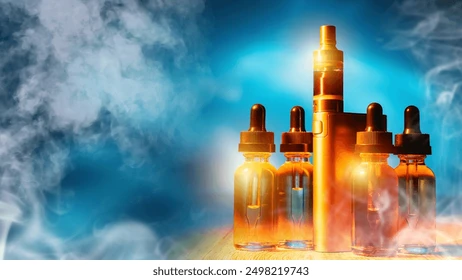Vaping has rapidly become a popular alternative to traditional smoking, but many people wonder exactly how e-cigarettes—or vapes—function. At their core, vapes are devices designed to deliver nicotine, flavorings, and other chemicals in the form of a vapor, rather than smoke. Understanding the science behind e-cigarettes requires breaking down Hayati Pro Max Plus Pods their main components and the processes that occur when you take a puff.
1. The Core Components of a Vape
Most e-cigarettes consist of four main parts:
-
Battery: The power source that heats the device. Rechargeable lithium-ion batteries are the most common.
-
Atomizer (Heating Element): The coil that converts the e-liquid into vapor. When electricity flows through the coil, it heats up rapidly.
-
E-liquid (or Vape Juice): A solution typically containing propylene glycol (PG), vegetable glycerin (VG), flavorings, and sometimes nicotine.
-
Mouthpiece/Drip Tip: The part you inhale from, which channels the vapor into your mouth and lungs.
2. The Science of Vaporization
When a user activates the vape (either by pressing a button or simply inhaling), electricity from the battery flows through the coil. The coil heats up to a temperature high enough to vaporize the e-liquid, turning it into an aerosol that can be inhaled. Unlike traditional cigarettes, vaping does not involve combustion, which is why it produces vapor instead of smoke.
The combination of PG and VG in the e-liquid plays a key role in the vaping experience:
-
Propylene Glycol (PG): Thinner, provides a stronger throat hit, and carries flavor well.
-
Vegetable Glycerin (VG): Thicker, produces dense vapor clouds, and has a slightly sweet taste.
3. Nicotine Delivery
Nicotine in e-liquid is absorbed in the lungs and then enters the bloodstream, similar to traditional smoking. The body experiences the stimulating effects of nicotine, which can include increased heart rate, alertness, and dopamine release, contributing to the addictive potential of vaping.
4. Temperature and Safety
The temperature at which e-liquid is vaporized is crucial. Too low, and the device produces little vapor; too high, and harmful chemicals like formaldehyde can form. Modern vapes often include temperature control and wattage settings to optimize vapor production while minimizing risks.
5. Flavor and Chemistry
Vape juices come in thousands of flavors, from fruity to dessert-like. Flavorings are often food-grade chemicals, but research continues into their safety when inhaled. The chemistry of vaporization changes some compounds in the e-liquid, and understanding these reactions is a major focus of vaping research.
Conclusion
In essence, vapes work by using electricity to heat a liquid solution, turning it into an inhalable aerosol. This method delivers nicotine and flavor without burning tobacco, which reduces many—but not all—of the harmful byproducts of traditional smoking. While vaping is often marketed as a safer alternative, it is not risk-free, and ongoing research is exploring its long-term health effects.


